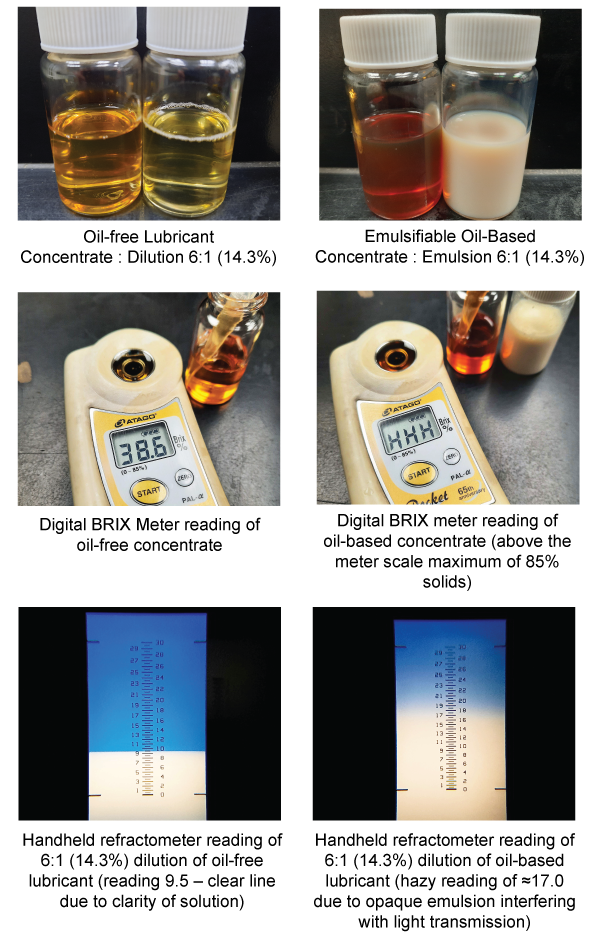REFRACTIVE INDEX DEFINED

BRIX: HISTORY AND APPLICATION
Today, the BRIX scale is commonly used in the food industry for measuring the approximate amount of sugars in fruits, vegetables, juices, wine, and soft drinks. It also finds use in the metalworking industry as a convenient way to check water-based lubricant concentration. As the BRIX measurement is based on the level of dissolved solids in an aqueous solution – it was adapted as a method for monitoring and controlling water-soluble stamping lubricant solutions. The use of portable, handheld refractometers and digital BRIX meters has allowed for more consistent process control in metal-stamping processes.
BRIX is a unit of measurement of refractive index, in the same way, Fahrenheit or Celsius is a measurement of temperature. In both circumstances, the properties of real-world materials were used to devise a continuous scale of measurement. In the case of Fahrenheit, the properties of water were used to come up with a scale based on its thermal behavior. The two ends of the scale were divided by 180°F, yielding 32°F for the water�s freezing point and 212°F for its boiling point.
In the case of BRIX, sugar (sucrose) solutions were used to develop the scale. Arbitrarily, the refractive index of pure water (RI=1.333) was simply defined as “0” BRIX. The rest of the scale was calibrated to be read directly as percent Sucrose (i.e. BRIX). This was a convenient reference, as it was used to monitor when the fruit had ripened and was ready for harvesting. Today, the BRIX scale is commonly used in the food industry for measuring the approximate amount of sugars in fruits, vegetables, juices, wine, and soft drinks. It also finds use in the metalworking industry as a convenient way to check water-based lubricant concentration.
Measurement
Because of the widespread availability of handheld refractometers, measuring the BRIX value of fluid is easy. However, not all solids bend light to the same degree. The actual concentration of a given fluid must be calibrated to relate to BRIX by the manufacturer. A conversion factor or Brix table should be provided for each product.
Interpretation
Not all solids are equal! In metalworking, BRIX is quite handy for monitoring dilutions, but it is less useful for comparing two different fluids. Depicted to the right are several fluids and their BRIX values. It is important to understand that although BRIX can be related to concentration, it says nothing about the nature of the solids. Put another way, a 64 BRIX could be a highly additized synthetic lubricant concentrate – or it could be maple syrup. A 32 BRIX could be a 1:1 mixture of that same lubricant – or it could be ketchup. One would be suitable for working metal – and the other would crash your die.


